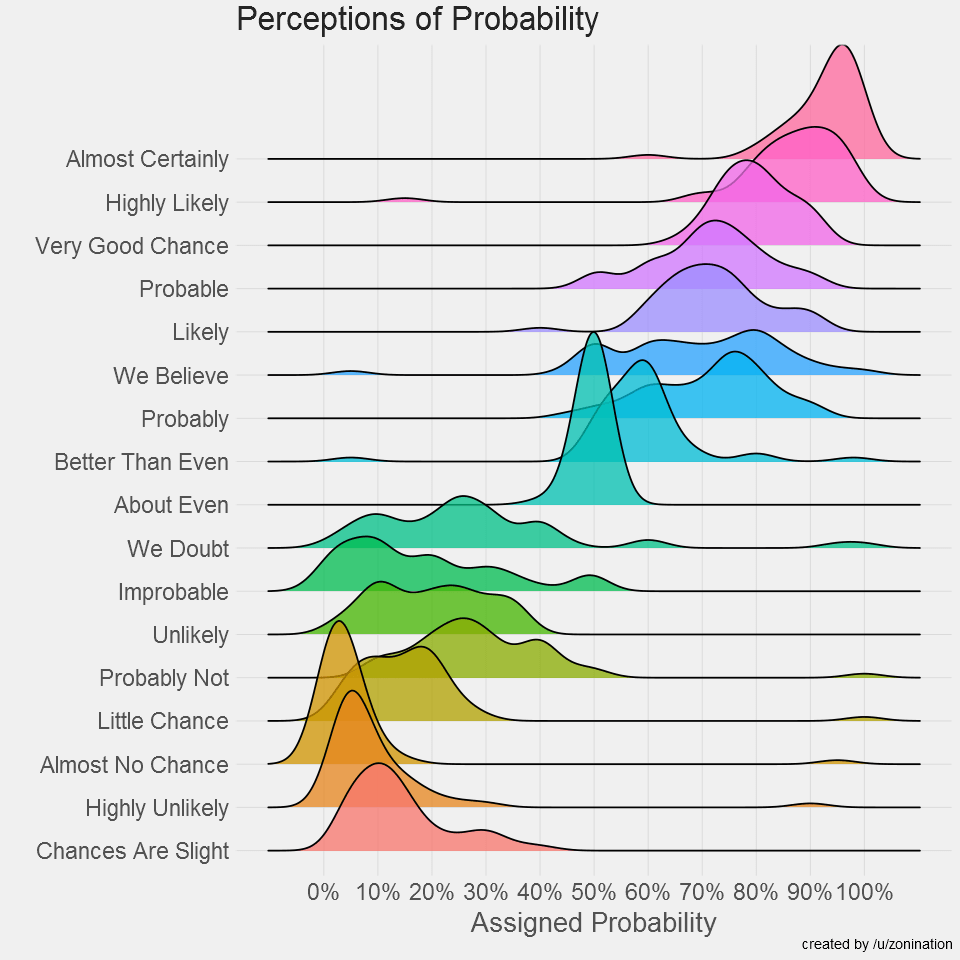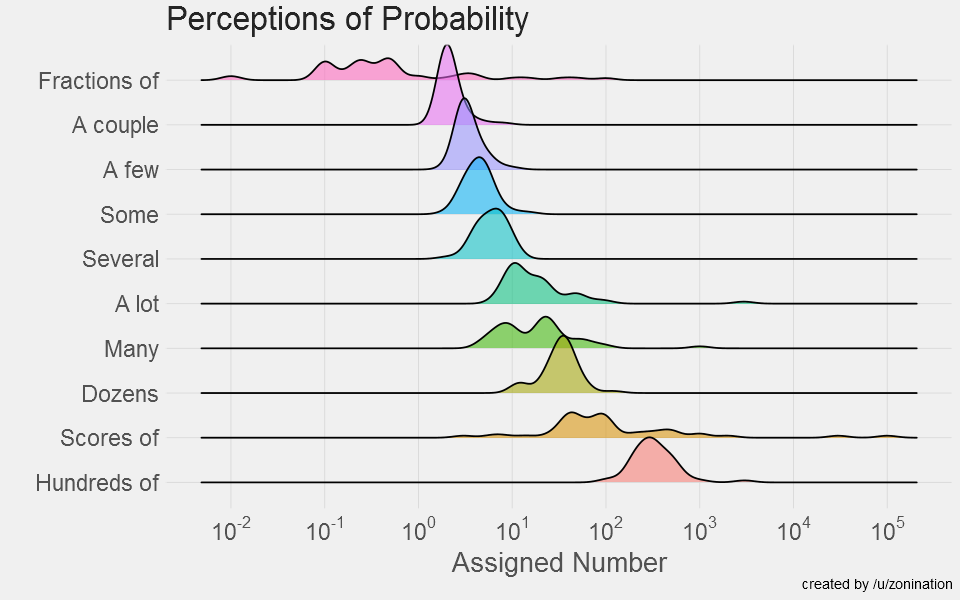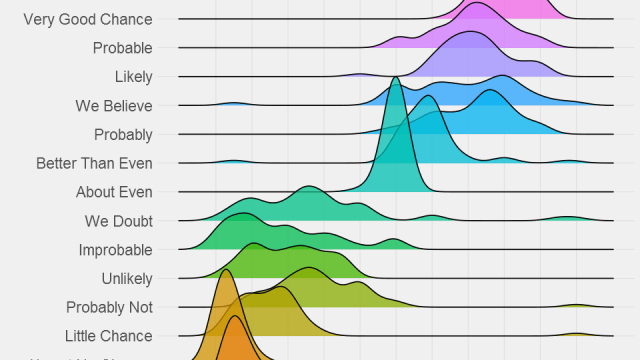Just how likely does “probably” sound to you? To some people, “probably” means that something is practically locked in. To others, it means the likelihood of something happening is highly dubious. This graph assigns percentage values to a range of common phrases relating to probability. Turns out you should say “almost certainly” instead of “probably” if you want to minimise doubt.
Graph by zonination
Redditor zonination asked users of the polling subreddit /r/samplesize to assign percentage values to a range of common phrases about probability, and graphed the results. The sample size is tiny (just 46 respondents), but the data still looks clustered enough to be useful — plus it generally matches results from the survey that inspired it, a study of 23 NATO officers. Two years after their original survey, zonination has re-plotted the data as a gorgeous “joyplot” (a la Joy Division)

The graph above is smoothed; you can see a more precise and wonky graph, as well as the original data, at the project’s GitHub page. There are a couple of goofy outliers (one person labelled “probably not” as 100%) but zonination says the outliers are all from the same respondent (so they probably should have been omitted).
There’s also data on what amounts like “a few” or “dozens of” mean to people, but the graph is on a logarithmic scale that makes some answers hard to interpret. Of course, the phrases below were stripped of the context that could imply vastly different meanings. “Some Americans own two homes” obviously means something different from “I left some dishes in the sink.”

The main takeaway is that people interpret the same phrase in very different ways, so when you need to communicate an important probability or amount, it’s best to use concrete, quantitative language, ideally an actual numeric range.
For more joyplots, search for #joyplot on Twitter.
Perceptions [GitHub via Randy Olson]

Comments